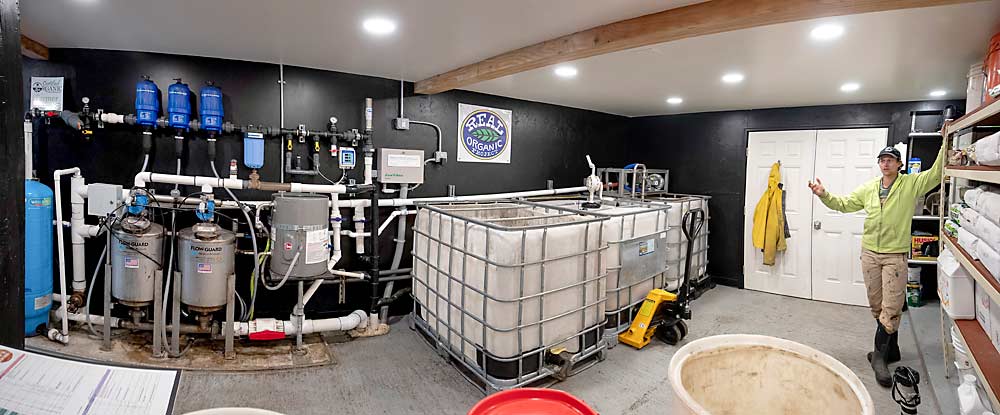
No recipe exists for regenerative organic apple growing in the western foothills of Washington’s Cascade Range, a world away —
climate-wise — from the apple industry’s epicenter east of those mountains.
“We don’t have the luxury of five generations of knowledge,” said Griffin Berger, who co-owns Sauk Farm with his father, Jesse. They’ve grown a hobby farm into a soon-to-be 20-acre organic orchard business over the past seven years, thanks to Griffin’s energy for experiments.
“I am still learning,” he said. “It’s a constant journey of learning.”
Cover cropping. Composting. Making compost tea blends. Fertigation.
Berger credits his “nutrition first” and soil-health-heavy approach with improving his trees’ resilience and improving the flavor of the fruit.
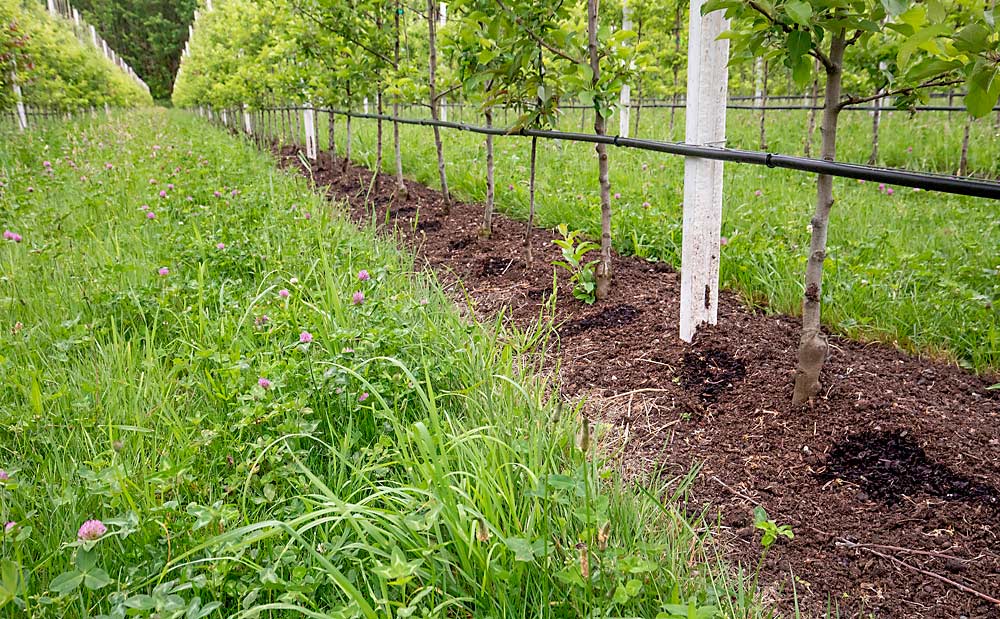
“I’m only in business because I can produce flavor,” which is what drives consumers to spend more for locally grown organic apples, he said. “I don’t have a business without that.”
His business produces fresh-market apples and processed Honeycrisp products that are sold in about 100 stores. About a third of his products are sold through the Puget Sound Food Hub Cooperative, which was founded in 2016 to build a supply chain for Puget Sound farmers to access retail and wholesale markets. Berger serves on the cooperative’s board of directors.
“For being the young guy that he is, he’s a strong leader and brings really innovative, progressive ideas while also staunchly representing a preservationist approach to the co-op’s mission that we are serving local farmers, helping them to grow their sales channels,” said executive director Andrew Yokom.
He highlighted Berger’s innovation and embrace of technology.
“What I see Griffin doing with his adoption of technology in his orchard and processing rooms is finding ways to compete on price and quality,” Yokom said. “You can grow fruit a lot cheaper out in Eastern Washington, therefore, it’s up to us to provide value to our customers. They can see it in the quality of his fresh apples and processed products.”
On the farm, those progressive ideas include planting high-density orchards with concrete posts from Italy, investing in a platform and state-of-the-art fertigation systems, and a new system for brewing compost tea.
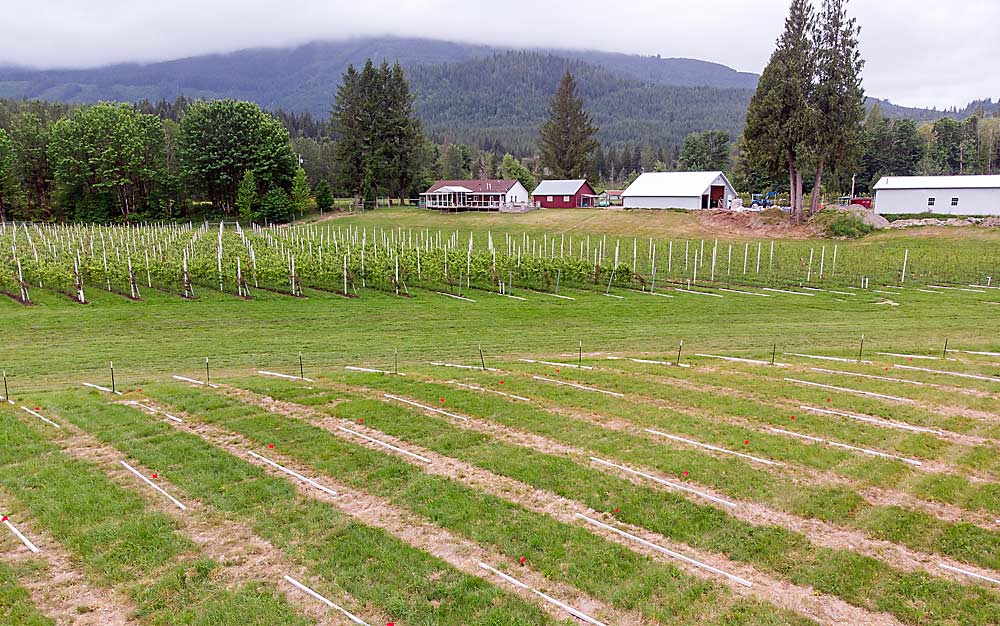
Though he studied at Washington State University, Berger said he often has to look farther afield, at research from Midwestern or European climates, to get ideas that apply to his orchard. Beyond that, he conducts his own experiments. Good Fruit Grower visited with him to learn more from his unconventional approach to orchard soils.
“We’re just trying to build resiliency in the trees and in the soil so they can deal with every given scenario,” he said. “The problem with how I farm is that I never say no to trying a new thing.”
Take his recent foray into compost tea. His idea was to take soil samples from thriving trees in representative soils and encourage microbes in the soil to reproduce in a substrate of compost and worm castings, fed by molasses, oat flour and kelp powder, among other things. He applies the resulting microbe-boosting solution to the orchards.
“It took me a year to dial in the microbes we want to feed to the root zone of the trees,” Berger said. Now, he applies it at 30 gallons per acre and has noticed more mycorrhizae in the soils and higher nutrient levels in the trees, allowing him to skip some foliar nutrient sprays.
Berger also designs his fertigation plans to “spoon-feed” both the trees and the soil microorganisms. His system includes three Dosatron injectors, so he can apply acidic, basic and neutral solutions simultaneously.
He sees the soil system as a way to encourage the diversity that leads to an efficient orchard system.
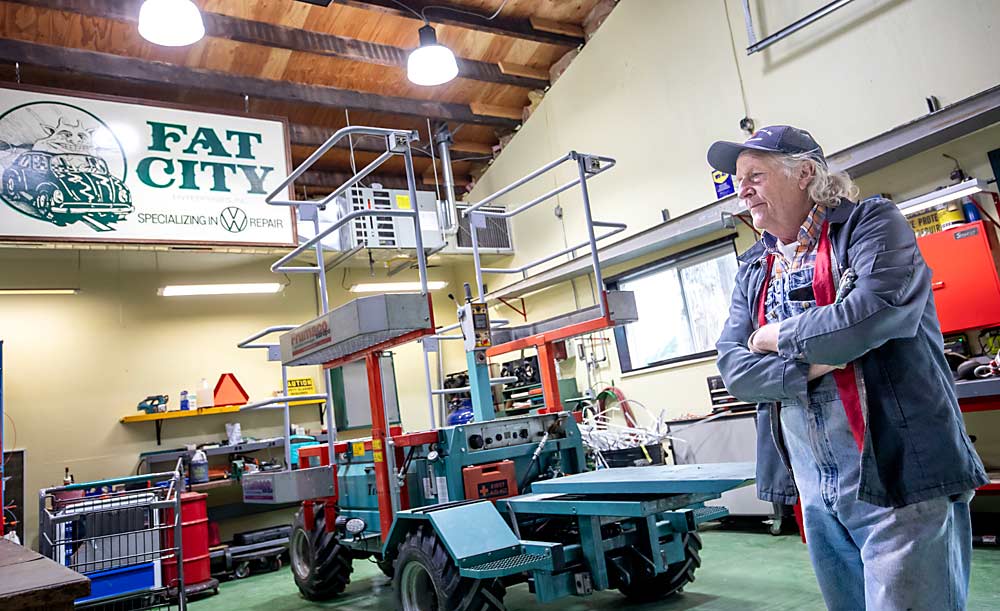
“An orchard is a monoculture, and we’re trying to make it not a monoculture,” Berger said. “So, we have to embrace cover cropping and manure to get that microbial growth and layers of biomass.”
He planted diverse cover crops, too, rotating two blends every few years. For fumigation and pest and disease suppression, he opts for a hot mustard and rapeseed blend, while a clover mix with tillage radish and orchard grass boosts nitrogen fixation.
The cover crops, manure and compost, and fine-tuned fertigation all help his trees make more efficient use of their water and nutrient inputs, Berger said.
“I think with the regenerative thing, it’s trying to piece together what’s missing with organic certification now,” he said. “Most people farm organically by switching out their inputs; regenerative is site-specific and about putting energy into dialing in your soils.”
But while he chases soil diversity, he is pulling back on crop diversity. Last year, Berger ripped out 3 acres of grapes, and this spring he will begin planting the first
7 acres of a planned 15 new acres of MAIA-1, marketed as EverCrisp, and Crimson Crisp apples.
Apples return more profits and simplify his management and equipment needs.
“For the longer term, it’s about doing what we are good at,” he said.
Berger likes CrimsonCrisp for its disease resistance and even cropping, and he said EverCrisp is proving to be very resilient to climate extremes.
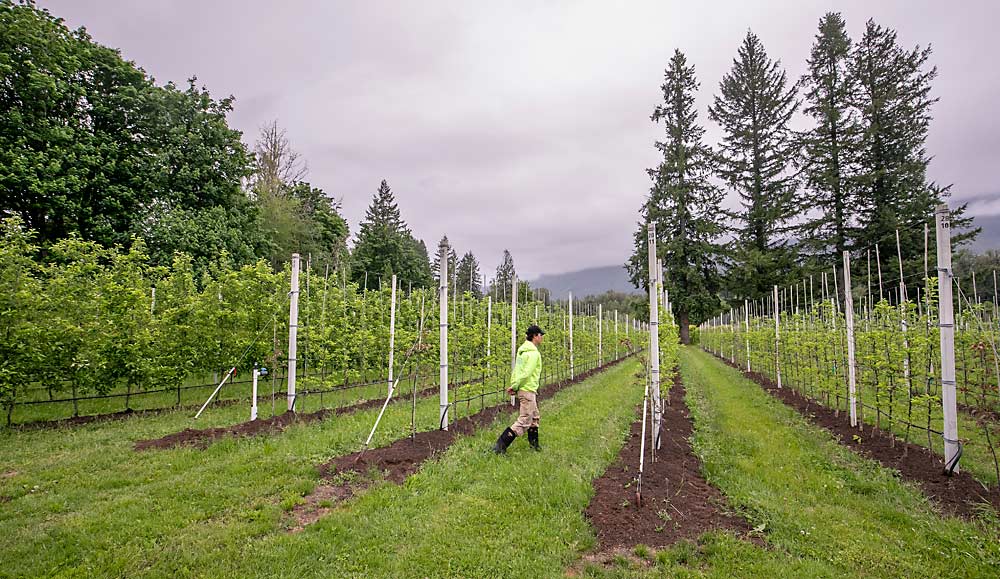
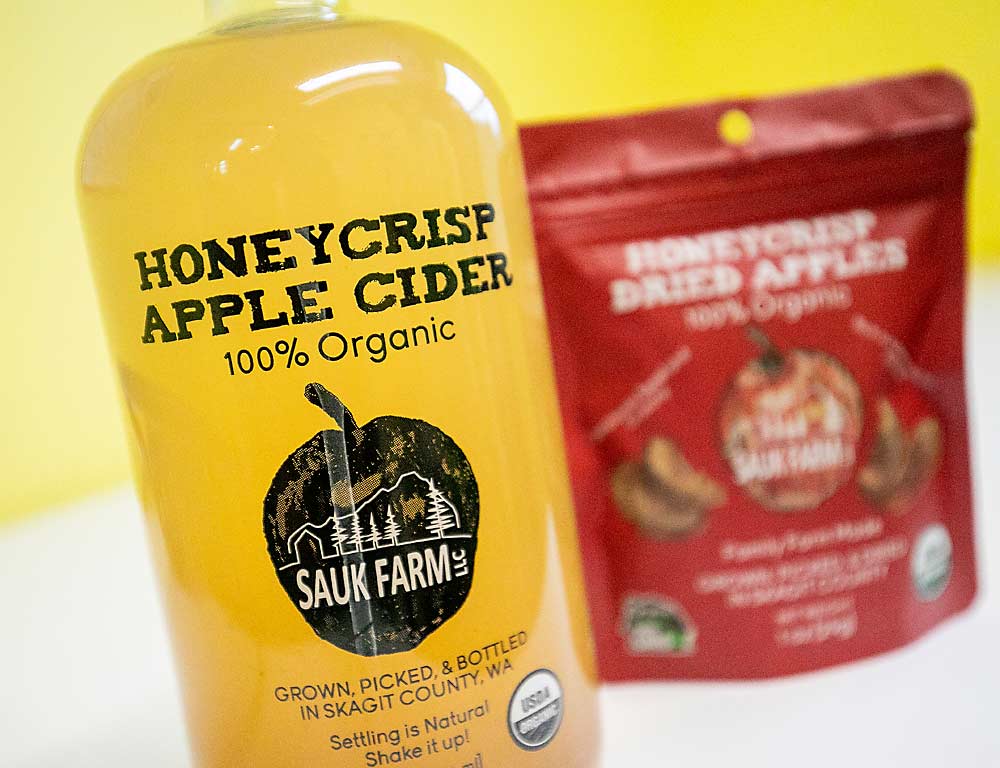
To prepare for those new plantings — with 10-foot rows and 2-foot tree spacings — Sauk Farm installed concrete trellis posts last year. Even with shipping costs from Italy, the posts make economic sense for his farm, Berger said.
“It’s a really high rainfall environment over here, and the wood posts just rot out,” he said, citing a deer fence installed in 2012 that’s already rotting in places. The permanence of concrete makes it a sustainable asset. And once the posts are in place, “it just takes a wrench to build the trellis system” using galvanized wire clips.
Until those new plantings come into production, Honeycrisp is his top crop. But, with the success of the farm’s investment in processing the consumer-favorite apple into juice, applesauce and dried fruit slices, Berger is shifting his approach to it.
“A lot of times we are putting perfectly good fruit into the value-added line,” he said, because of the demand to have inventory year-round. Now, he limits his Honeycrisp to two picks: Perfect fruit for the fresh market, and then everything else for processing.
The approach allows for labor efficiencies, even as he shifts to easier-to-grow apples for the fresh market.
“It’s been a lot of trial and error, and I think that’s what all good farmers should do,” he said. “We’re not perfect, we’re not done, but we have proof of concept and we’re profitable.”
—story by Kate Prengaman / photos by TJ Mullinax






Leave A Comment